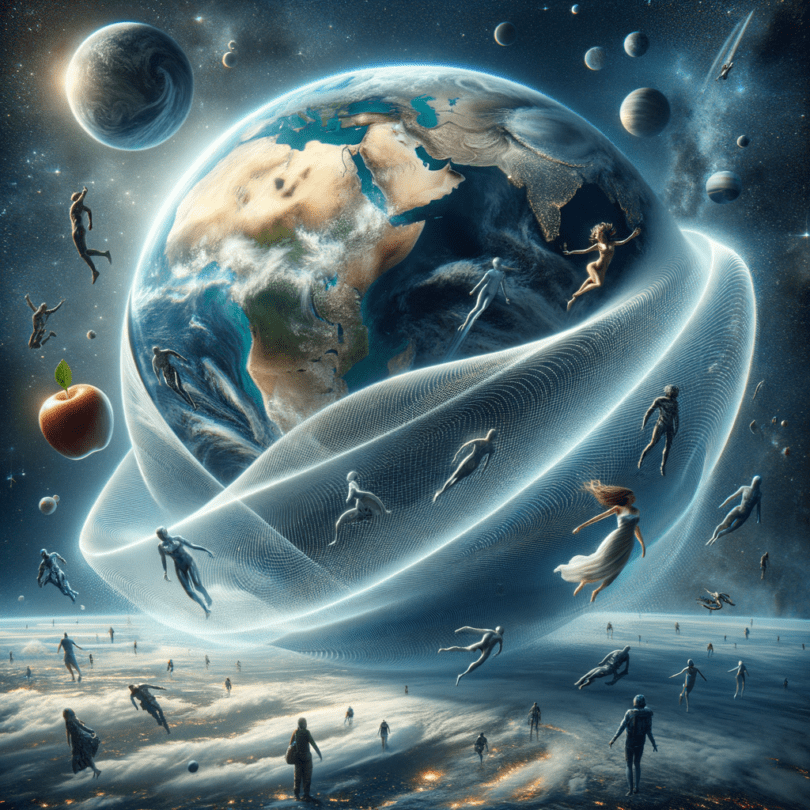I’m here, plopped at my desk, and my thoughts are bouncing around helplessly like popcorn kernels in a pan. I’m wrestling with this deceptively simple yet jaw-droppingly fascinating thing we call gravity. I mean, it’s one of those things I just don’t think about much, like how my feet stay firmly on this planet and my coffee doesn’t decide to just up and float away like it’s got somewhere better to be. But whenever I do consider it—maybe when I watch my cat launch himself into the air only to crash back down like a furry little meteor—gravity leaves me absolutely gobsmacked.
See, gravity is this invisible tether that keeps us clinging to Earth. Without it, we’d be floating off into the void, potentially ending up on Mars for all I know—though probably somewhere much less cosy. So what actually makes gravity work, and why the heck can’t we live without it?
The Nature of Gravity
There’s a sort of romanticism to gravity to me, like it’s this gentle hug from the universe, pulling us close. In the science-y sense, though, it’s a force, a bit like magnetism, but not quite. It’s not like flicking a switch; gravity is always on, the unsung glue holding the cosmos together.
Thank goodness for Newton, good old Isaac, who handed gravity the spotlight. Legend has it, his moment of epiphany struck when he saw an apple fall—not on his noggin, as urban myth has it, but close enough. From this lightbulb moment, he figured out that some force was tugging at the apple, keeping it glued to Earth, just as it must herd the Moon around our swirling globe.
And here’s the kicker: Newton looked at gravity like a kind of web with every object connected by attraction. It’s like cosmic objects have these eternal secret crushes on each other. The bigger the object, the stronger its pull. So that’s why our mountainous Earth anchors us while a tossed pebble just plops back down.
But even the genius Newton couldn’t quite crack the whole story. Why do objects fancy each other so? What, in the name of all that is holy, is gravity? And along came Einstein—our wild-haired, violin-strumming maverick—who gave us some answers.
Einstein’s Take
Einstein, that cheeky brainiac, shook up everything we thought we knew. He cooked up the idea that space and time are like a massive cosmic quilt—spacetime, he called it. Imagine a trampoline with a bowling ball smack in the middle. The trampoline gets all bent out of shape, right? Easing a marble around the edge, it loops towards the bowling ball, following the curve in the trampoline. This, my friends, is how Einstein visualized gravity.
Our dear planet pulls a bowling ball move, bending the blanket of spacetime, creating a path for the Moon to trip around. The real twist? It’s the warping of spacetime that keeps celestial objects whizzing around—not some phantom force. Pretty mind-blowing stuff, if you ask me.
Einstein’s insight was revolutionary. The more a cosmic body weighs, the more it stretches spacetime. That’s why my coffee cup hardly makes a dent in my desk compared to our planet’s hefty influence. That’s the beauty of relativity and why Einstein became an icon.
Gravity and Our Everyday Lives
Now, what about us little humans going about our days? Weird but true: we’re in constant free fall—the only thing stopping us from darting off is Earth itself. So just sitting here typing, I’m caught in an endless tug-of-war with gravity.
When my pen slips from my fingers, gravity snaps, “Nope, you’re not defying me today.” When I leap into the air, there’s that split-second where I’m soaring until gravity proudly reels me back in like, “Gotcha!” It’s this continuous duet of push and pull that becomes second nature.
Gravity is like our warden and guide—keeping the atmosphere nearby, cradling the oceans, and making mountains stay put. We scheme around it, inventing airplanes that skim its clutches, and dream of someday escaping its grasp into the cosmos.
Yet there’s a peace in this relentless gravity. Steady and unseen, it keeps pandemonium at bay—a cosmic choreographer holding the universe’s reins. Even how we measure things involves Earth’s gravitational nagging; weight is simply mass with a gravitational twist.
Why We Can’t Let Go
I’ve often daydreamed about a world without gravity. Would we drift around like petals on a breeze? Could we ever be grounded, both physically and metaphorically? Gravity’s hold gives our chaos a spine. Sure, we moan about it when we trip or the phone somersaults to the floor, but it’s the force behind our entire celestial waltz. It’s this reliable anchor when everything else feels fleeting.
Up there in space, astronauts work in microgravity, like an alternate reality where stuff perpetually floats, and unused muscles wither. They tether themselves, longing for Earth’s comforting force. There’s an irony, isn’t there? Here we are dreaming of flight, while astronauts yearn for the weightiness of solid ground.
Gravity gently nudges, “Stay put,” inviting us to break free while offering solace in its hug. And I think there’s something poetic in that. It’s that friend you barely notice till they’re gone, a phantom in a world of phantoms.
The Philosophical Gravity
It truly humbles me, realizing this invisible, steady force shapes our existence. Gravity isn’t just science; it’s a symbol—a reminder of both constraint and potential. Maybe that’s why we’re captivated by it—it bounds us and yet inspires us to stretch. To reach for the heavens even as we hold onto home.
So next time I fumble with my pen or watch my cat’s less-than-graceful dive, I’ll tip my hat to gravity’s unwavering embrace. Sure, Einstein and Newton unraveled much of its enigma. But I find joy in appreciating its constant hug. Whatever tugs us downwards is also what keeps us together, grounded. Nature has her ways, her secrets. And dear old gravity—she’s one of the most enchanting.

